- Emerging Technology for Manufacturing Rail Axles
- Emerging Technology for Manufacturing Rail Axles
Emerging Technology for Manufacturing Rail Axles
Solid railroad axles can be produced with a variety of metal-forming techniques. This article reviews these techniques and focuses on a more recent method called skew rolling, which is performed using three rolls to form an axle profile according to product specifications.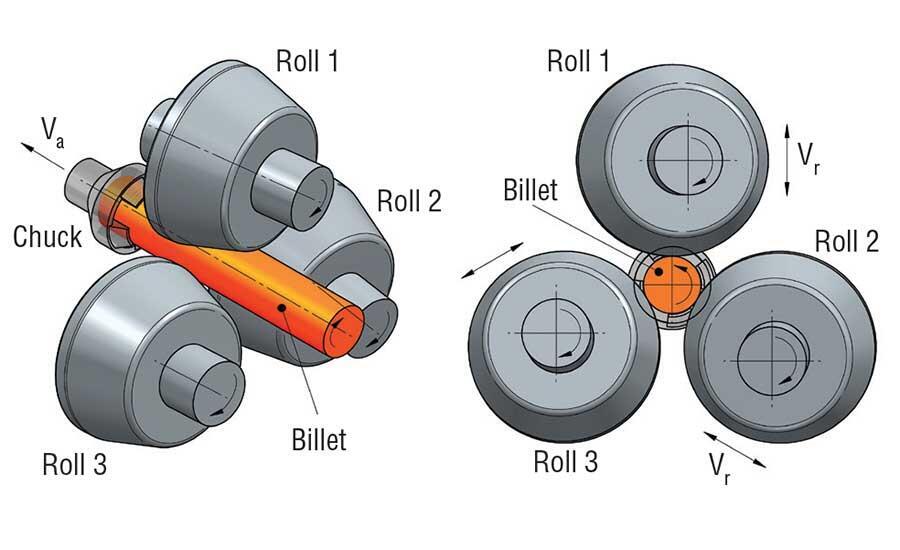
Figure 1. The concept of skew rolling with three rolls
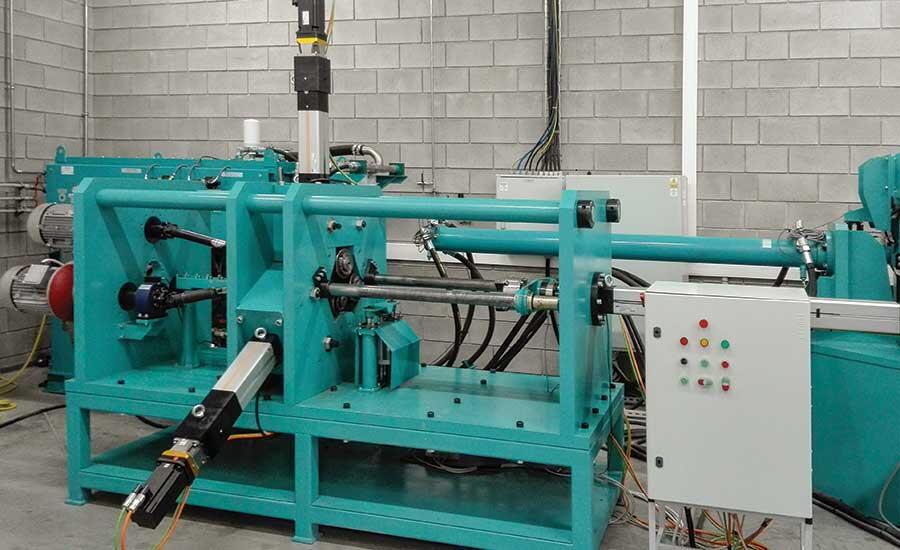
Figure 2. CNC skew-rolling mill
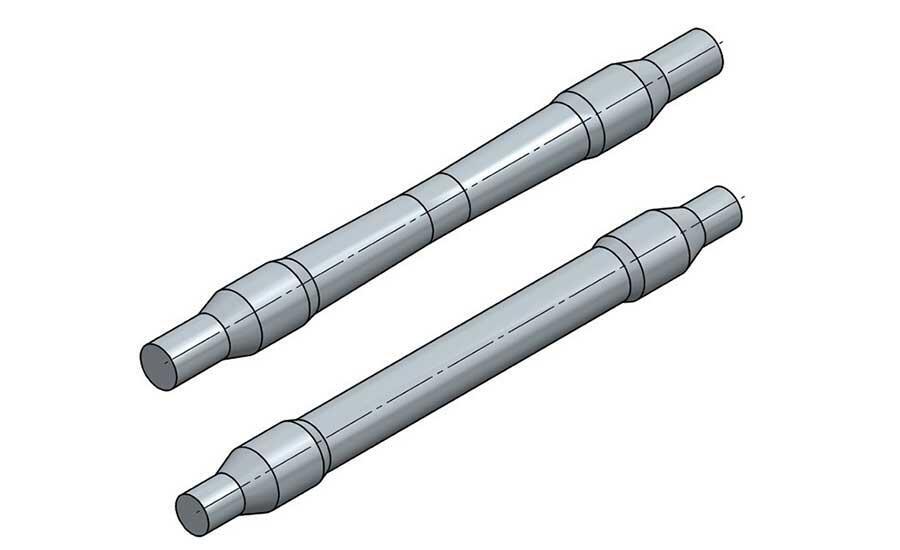
Figure 3. Examples of rail axles: a) American version, b) European version
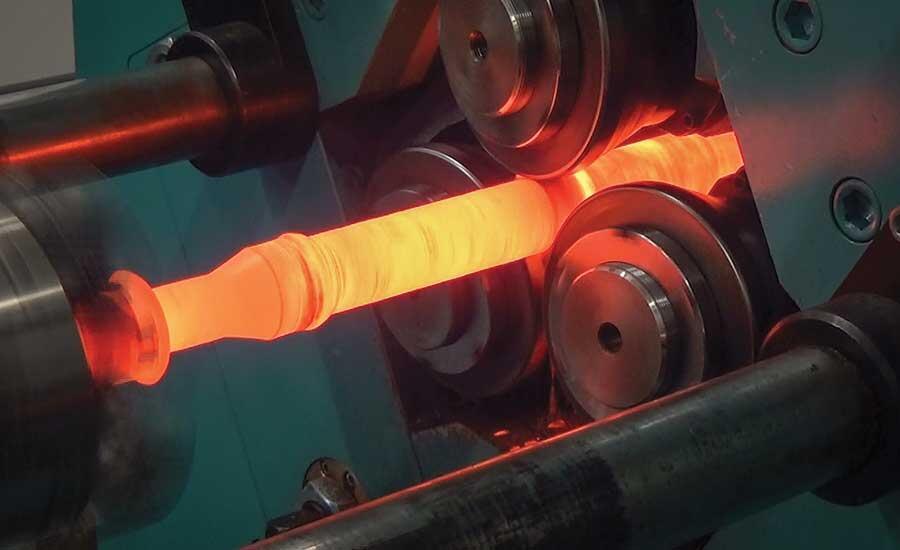
Figure 4. Skew rolling of a rail axle
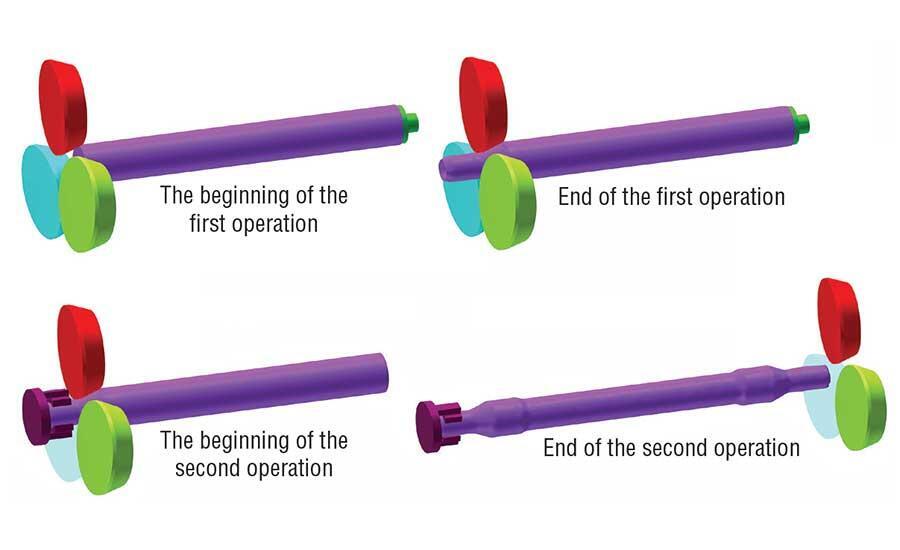
Figure 5. Scheme of rolling rail axles in two operations
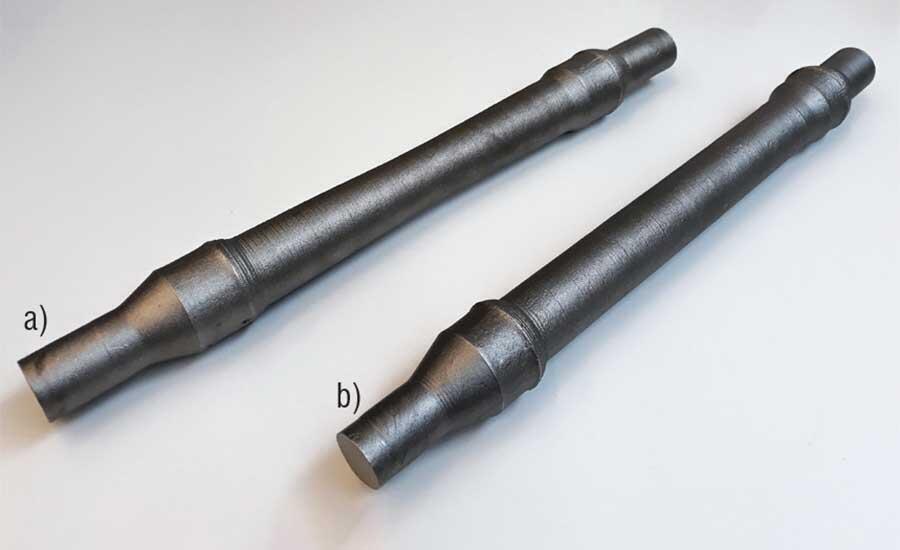
Figure 6. Examples of rail axles rolled in laboratory conditions at Lublin University of Technology: a) American version, b) European version
Semyon Brayman, Dr. Tomas Z. Bulzak, Alexander Roudovitch, Zbigniew Pater , and Janusz Tomczak
KEYWORDS metal forming / railroad manufacturing / skew rolling / skew-rolling mill
A rail axle is a round steel rod whose cross section varies along its length to conform to the individual purpose of the parts and stresses that occurs in it. The types of unfinished axles that may be produced, depending on the production method, include solid axles and hollow axles.
Solid axles can be produced by hammer forging, stamping on a hydraulic or eccentric stamp press, stamping on a radial forging machine, cross-screw rolling on a three-roll mill, cross-wedge rolling with a flat tool, and cross-wedge rolling with a round tool.
Hollow axles can be produced by cross-screw rolling on a three-roll mill, stamping on a radial forging machine, cross-wedge rolling with a flat tool, cross-wedge rolling with a round tool, or longitudinal rolling of tubes on a tube mill followed by journal stamping on a press.
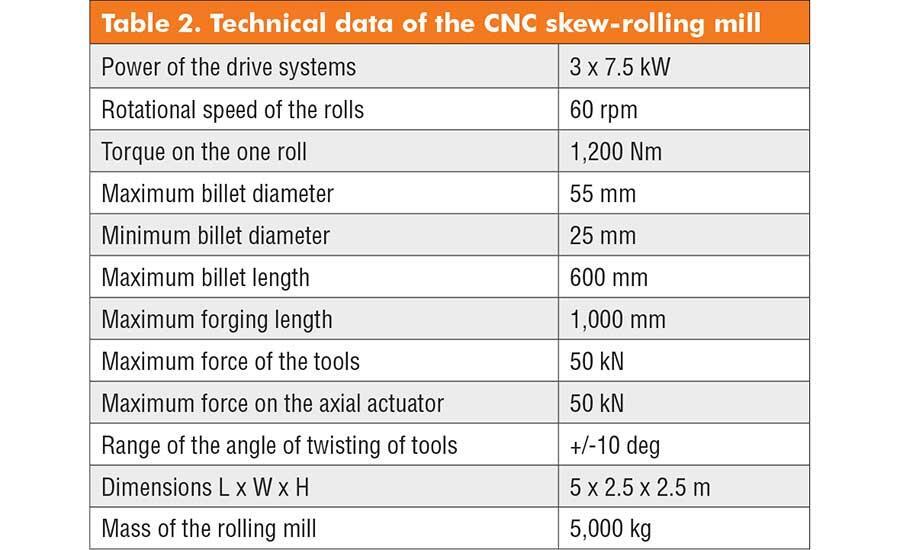
Comparison of various existing rail-axle production methods is shown in Table 1.
The Skew-Rolling Process
ERS Engineering Corp. together with AMTengineering and Poland’s Lublin University of Technology (LUT) have developed and are offering a manufacturing cell to produce unfinished rail-car axles on the basis of a three-roll skew-rolling or cross-wedge rolling mill.
Skew rolling is done with three rolls (tools). The rolls, placed diagonally to the axis of the rolled product (rail axle), rotate and can move radially to the axis of the rolled product. The radial movement of the rolls is programmed by a CNC system. A radial change in the location of the rolls allows one to control the diameter of the rolled product.
The billet is fixed in a chuck, which can move in the axial direction of the workpiece. Movement toward the axis of the chuck is programmed using the CNC system. Upon combining the radial movement of the rolls and the axial movement of the chuck, one is able to manufacture long, axially symmetric elements of any shape. The concept of skew CNC rolling is shown in Figure 1.
Numerically Controlled Skew-Rolling Mill
The CNC skew-rolling mill (Figure 2) was designed and produced at LUT. It allows one to roll long, axially symmetric elements in accordance with the skew-rolling concept. The rotational movement of each roll is generated automatically by an electric motor.
The radial movement of the rolls and the axial movement of the chuck are realized by an electric cylinder. The radial movement of the three rolls is synchronized with the axial movement of the chuck using computer software. This synchronization is programmed such that the resultant radial movement of the rolls and the axial displacement of the chuck produce the desired profile of the rail axle. The basic technical data of the skew CNC rolling mill built at LUT is shown in Table 2.
Skew Rolling of Rail Axles
The examples of axles with length exceeding 2 meters (6.5 feet) and mass over 450 kg (992 pounds) are shown in Figure 3. Even though the geometries of these axles are different, skew-rolling technology facilitates their production on the same machine and using the same tools (rolls). In order to change the product specifications, the program controlling the movement of rolls and the chuck must be changed, a feature often seen in CNC machine tools. The skew rolling of a railroad axle is shown in Figure 4, which also shows an allowance of material required for clamping the material in the chuck.
The allowance required for clamping the billet can be eliminated by introducing a new rolling scheme, which has been numerically analyzed. The results of rolling according to the new scheme were presented in an animation from the numerical calculations conducted in Simufact Forming. The new scheme of rolling is also shown in Figure 5.
The new solution utilizes two chucks. The first pushing chuck is used in the first operation for pushing the material between the rolls. After the front part of the axle is formed, the second pulling chuck is actuated. It grabs the formed part and pulls it out of the inter-roll area. The pushing chuck is prepared for the next billet.
Examples of the rail axles manufactured with this method of skew rolling are shown in Figure 6. Moreover, it is possible to form hollow axles from tube-shaped billets using the same machines and tools. An example of a hollow axle manufactured with this method is shown in Figure 7.
Conclusions
Skew-rolling technology, confirmed in laboratory conditions at LUT, makes it possible to manufacture rail axles of various types. The technology has numerous advantages, including:
- Versatility – one set of tools can be used to form numerous products
- High production efficiency
- High accuracy of the rolled elements
- Minimal finishing requirements
- Can form accurate, axially symmetric hollow elements
- Relatively low forming forces compared to the rolled-products dimensions
In summary, we propose that the use of cross-screw rolling on a three-roll mill may be the most rational and expedient method for new or expanded traditional mass production of unfinished axles.
Co-author A. Roudovitch is general manager of the Engineering Center of AMT Engineering, Belarus. He can be reached at amtengine@amtengine.com. Co-author S. Brayman is president of ERS Engineering Corp., West Bloomfield, Mich. He can be reached at 248-538-9082 or sbrayman@ersengine.com. Co-authors Drs. Tomasz Bulzak, Zbigniew Pater and Janusz Tomczak are with the mechanical engineering Dept. of Lublin University of Technology (Poland). They can be reached at t.bulzak@pollub.pl, z.pater@pollub.pl and j.tomczak@pollub.pl, respectively. For additional information visit www.amtengine.com and www.ersengine.com.
